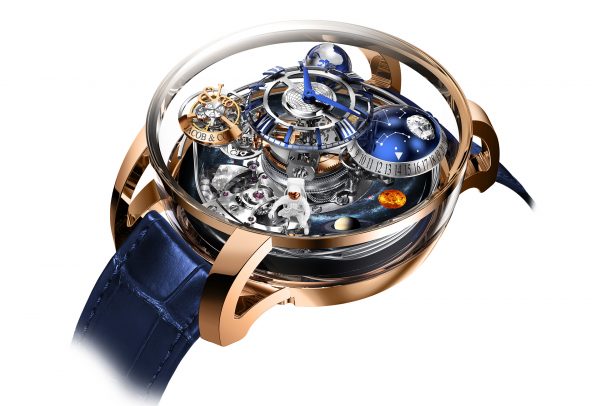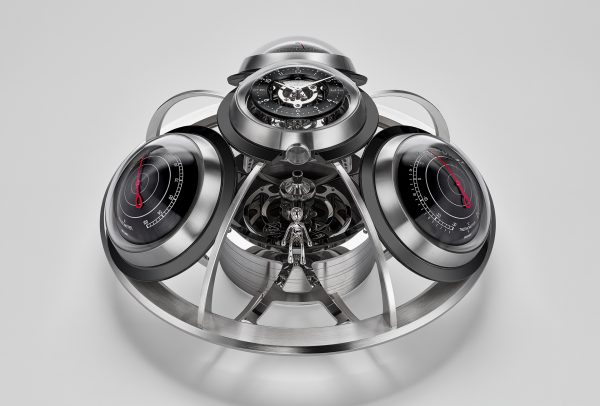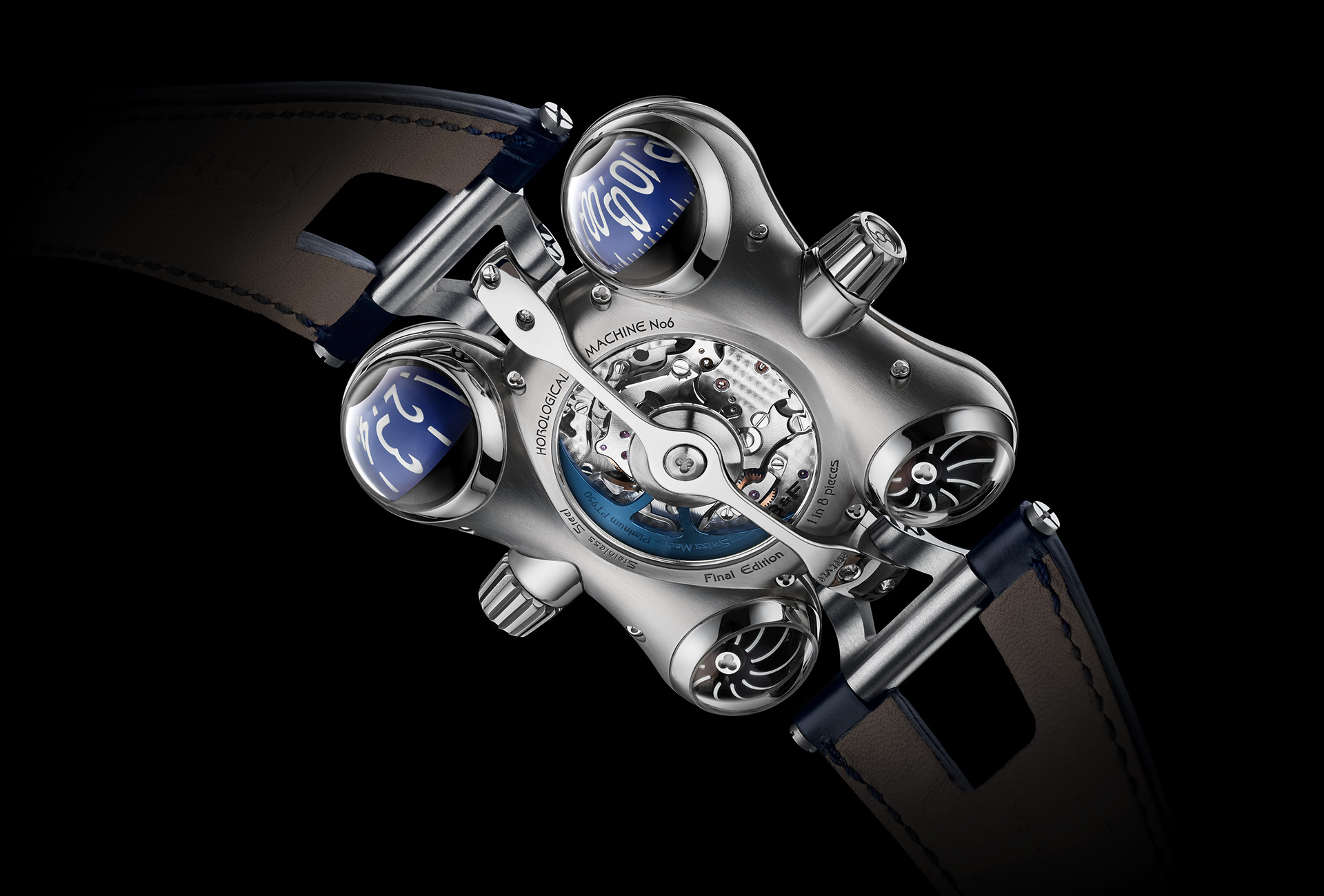Horology is a chid of astronomy, as we well know. But watchmaking’s connection to the stars and planets doesn’t end there, keeping guard over the intrepid individuals who venture into space. Since the Soviet Vostok 1 mission became the first crewed spaceflight in 1961, numerous cosmonauts and astronauts have taken their wristwatch beyond the final frontier, while the anecdotes relating to their adventures are legion. Man’s conquest of space is about heroes and historic moments which other brands regularly celebrate in symbolic, even offbeat ways. And if that weren’t enough, the jokers in the pack delight in creating unidentified non-flying objects based on the sci-fi comic strips they used to read under the blankets. We take a look at this infinite source of inspiration for the watchmakers here on Earth.
Ironically for something derived from observations of the planets, our calendar and time system are only valid on Earth. A cosmonaut orbiting our blue planet will see the sun rise and set 16 times a day – or rather every 24 hours. So does time really go faster in zero gravity? In his theory of general relativity, Einstein proved that speed of motion, time and gravity are interwoven: the closer we travel to the speed of light, the more time slows, but as the force of gravity becomes less, time accelerates… something the satellites we rely on for global positioning and communications, which travel 28,000 km/hour at an altitude of 300 km, must take into account.
To the Moon and back
Even so, the relativity of time hasn’t played much of a role in our conquest of space. At least not so far or on the current scale of exploration, starting with the first Moon landing. On July 21, 1969 Buzz Aldrin followed Neil Armstrong down the ladder onto the lunar surface, wearing the now legendary Speedmaster. Qualified for space flight by the National Aeronautics and Space Administration (NASA) in 1965 following a battery of tests, the Moonwatch, as it’s affectionately known, has become the star turn of its maker, Omega, which has released some 100 versions over the past 50 years. It accounts for around 30% of the Swatch Group brand’s sales.
This was just the beginning. Since that pioneering mission in 1961, more than 500 men and women have had the immense privilege of contemplating Earth from above. Twenty-six of them went to the Moon and 12 have set foot on its surface. All of them carried a spare watch (sometimes two) in their kit. We hate to say it, Switzerland, but Yuri Gagarin wore an off-the-shelf Sturmanskie when he became the first human in space. Founded in 1949, the brand’s watches were issued to Soviet Air Force pilots and weren’t yet available to the public. Apparently, Yuri had no complaints. The Russians would choose… an American brand for their next space missions, namely the Timex Ironman.
The U.S. Senate would surely have approved. In the months leading up to the Apollo 11 mission, the upper chamber of the United States Congress put pressure on NASA to equip its astronauts with a watch that was born in the USA. In vain. Or almost. The chairman of Bulova, Omar Bradley, a retired 5-star general, succeeded in getting the company’s Accutron movement into a number of the spacecraft’s instruments. Additionally, certain orbital manoeuvres were timed using a Bulova watch.
A year later, with the Speedmaster still NASA’s official watch, it would be a Rolex that would bring the Apollo 13 crew safely back to Earth. Along with his Omega, astronaut Jack Swigert climbed into the module wearing his personal Oyster Perpetual GMT Master which, according to James Dowling and Jeffrey Hess in their 1996 book, The Best of Time. Rolex Wristwatches: An Unauthorized History, stood in for the on-board timing devices when they were rendered useless by a power outage.
Wish you were here
No end of tales are told about the role of watches in space travel, often motivated by marketing messages. Just some of the brands to do so, apart from those already mentioned, are Casio (the G-Shock is also flight-qualified by NASA), Breitling, TAG Heuer, Seiko, Sinn, Tutima, Fortis, Yema and Fiyta. And while certain makers haven’t had the chance to see one of their watches lift off into space, this hasn’t discouraged them from paying tribute to this fabulous human adventure. Take Louis Moinet and its Skylink, presented in 2018, for example. It celebrates the joint mission in 1975 during which the Soyuz and Apollo spacecraft docked in orbit. The handshake between cosmonaut Alexei Leonov and astronaut Thomas Stafford would mark a new era of cooperation between Russia and the United States. The Skylink features a capsule at 3 o’clock that contains a fragment of material from the foil that protected the Apollo during its return to Earth as well as fibres from Alexei Leonov’s spacesuit.
The Fifth Element, a collaboration between L’Épée and MB&F, takes the form of an intergalactic horological weather station.
Jacob & Co has taken up the space theme as an illustration of the zero gravity suggested by its spectacular Astronomia Maestro carillon minute repeater. Mounted on a central four-armed carriage, a star chart is offset by a triple-axis tourbillon, while a terrestrial globe spins opposite a hand-painted astronaut. Each element rotates on itself while completing one revolution of the dial in 10 minutes.

Nor is the American brand alone in introducing a living being into one of its watches. After the HM6 Space Pirate, its form directly inspired by Captain Future’s Comet spaceship, and following on from Project LpX, an intergalactic magnification station, MB&F recently launched (literally?) The Fifth Element. Created with L’Épée, this horological weather station comprises a clock, a barometer, a hygrometer and a thermometer contained inside the mother ship, expertly steered by Ross the alien pilot.

Space exploration and its many fictions will continue to fire watchmakers’ imagination. Last year NASA presented its Explore Moon to Mars programme and pledged to put humans back on the Moon by 2024. What kind of watch will they wear? The competition promises to be out of this world.

















